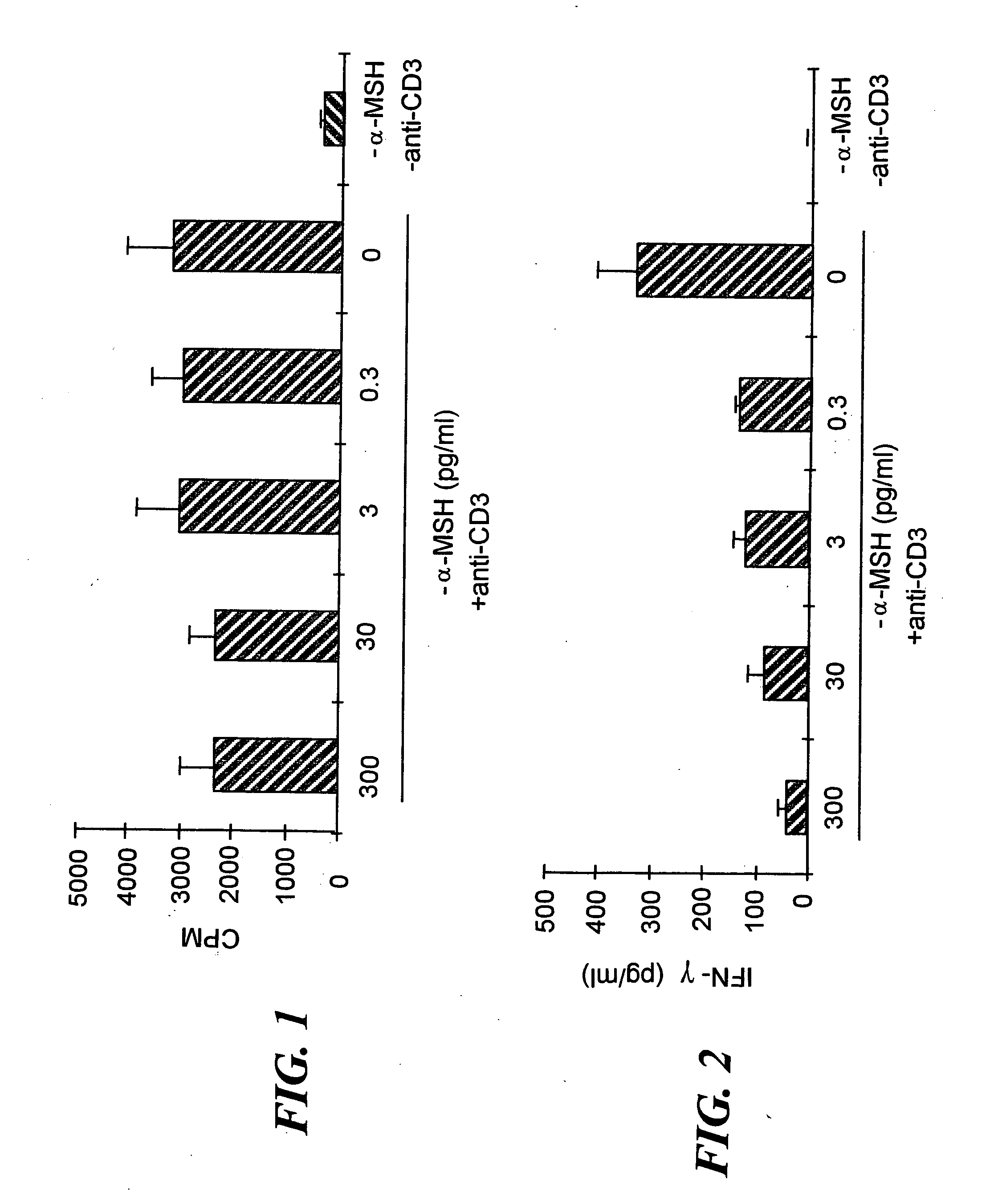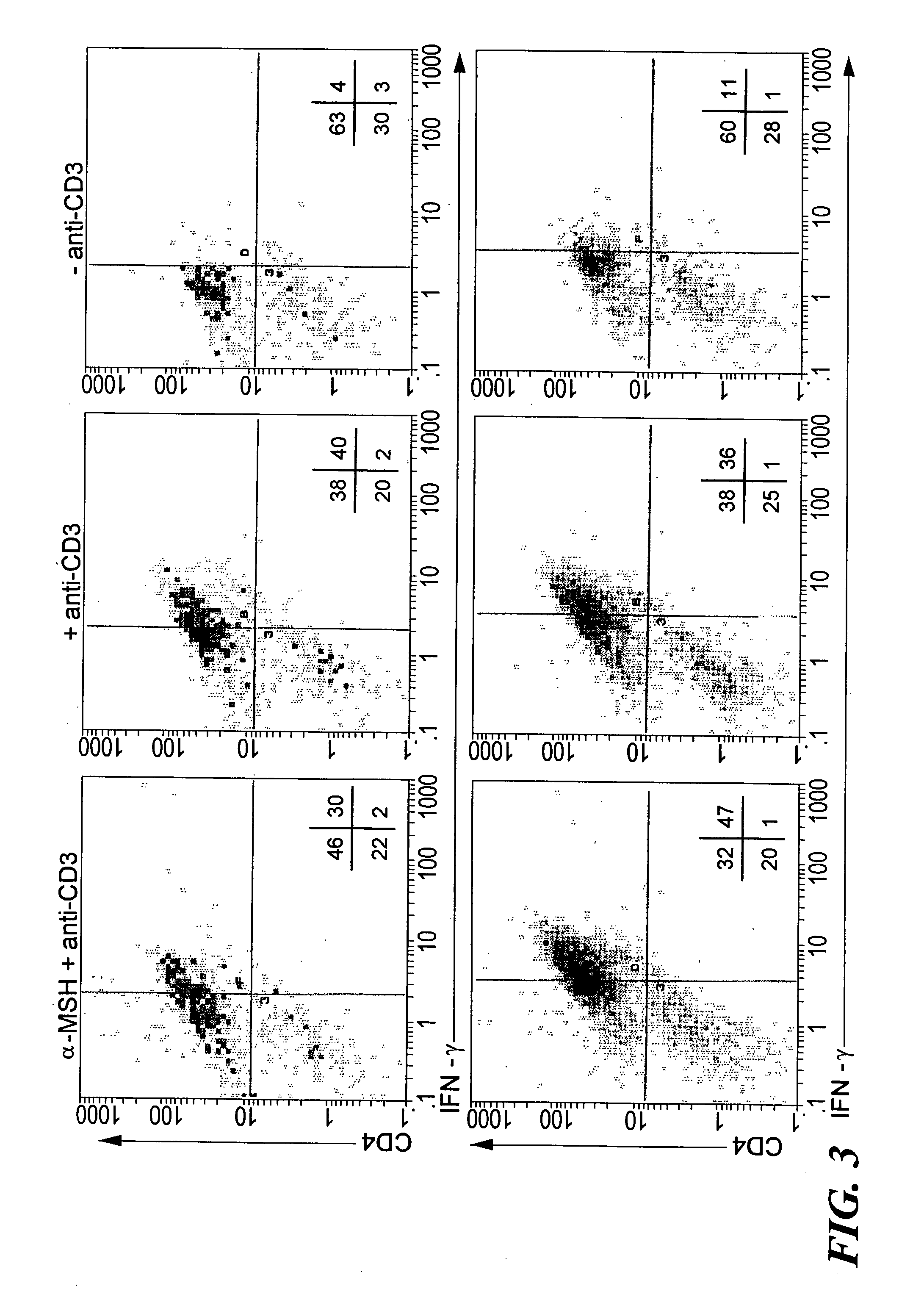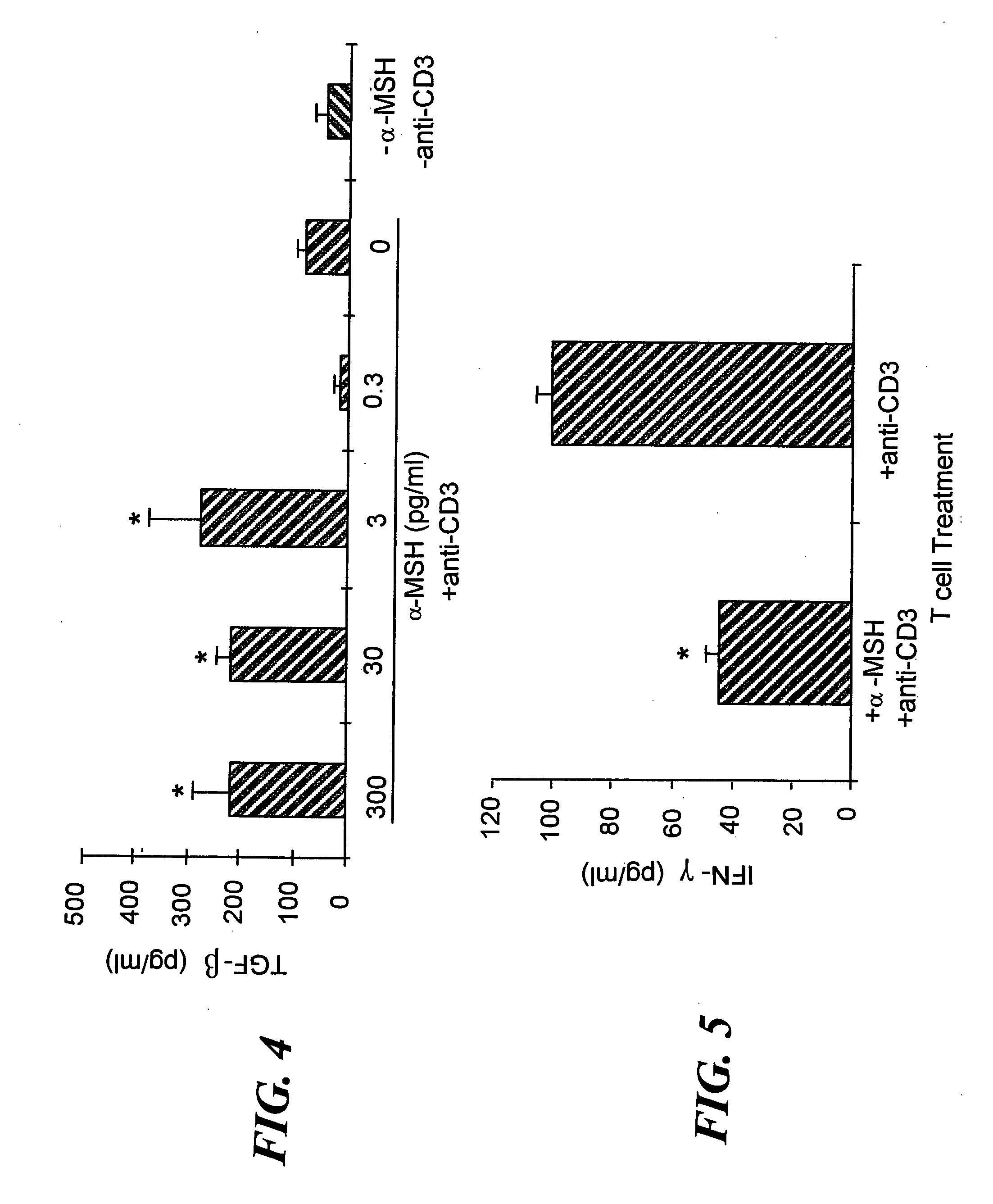Activation of regulatory T cells by alpha-melanocyte stimulating hormone
a technology of melanocyte stimulating hormone and regulatory t cells, which is applied in the field of regulation of t cellmediated inflammation, can solve the problems of -msh and tgf- that remain much unknown, and achieve the effects of reducing the risk of transformation
- Summary
- Abstract
- Description
- Claims
- Application Information
AI Technical Summary
Benefits of technology
Problems solved by technology
Method used
Image
Examples
examples
Exemplary Materials and Methods
[0054] Reagents and Animals. The experiments used synthetic α-MSH (Peninsula Laboratories, Belmont, Calif.); recombinant TGF-β2 and soluble TGF-β receptor type-two (R&D Systems, Minneapolis, Minn.); the following monoclonal antibodies: anti-CD4 (RM4-4), anti-CD25 (IL-2-receptor-α; 7D4) and anti-CD3ε (145-2C11) (Pharmingen, SanDiego, Calif.). B10.A and B10.RIII (Jackson Laboratories Bar harbor, ME) and BALB / c (institute breeding program) female mouse strains 4 to 8-weeks-old were treated with approval by the institutional animal care and use committee in accordance with the US Animal Welfare Act.
[0055] Antibodies and Cytokines. For TCR-stimulation, anti-CD3ε antibody 145-2C11 from Pharmingen (San Diego, Calif.) was used at a concentration that stimulated maximum proliferation and IFN-γ production by the primed Th1 cells (see below). In the sandwich ELISAs capture antibody and biotinylated-detection antibody pairs from Pharmingen were used for the IFN-...
example i
α-MSH has No Effect on TCR-Stimulated T Cell Proliferation.
[0071] Since α-MSH was previously found to suppress IFN-γ production by antigen-stimulated Th1 cells9, we investigated whether α-MSH suppresses all TCR-associated activities or only IFN-γ production. Additionally, α-MSH has been shown to have the potential to affect both antigen presenting cells (APC) and T cells. This observation made it uncertain as to whether the T cells could be a direct target of α-MSH immunosuppressive activity. To eliminate the influence of α-MSH on APC activation of T cells, APC were removed by enriching for CD3+ T cells from lymph nodes primed to M. tuberculosis. Also, the T cells were stimulated with anti-CD3ε antibody, 2C11, at a concentration that stimulated the T cells to maximally proliferate and produce IFN-γ, a maximized in vitro Th1 cell response. To examine the possibility that our previously observed α-MSH suppression of INF-γ production was due to α-MSH suppression of Th1 cell activation...
example ii
Aqueous Humor Treated Primed T Cells Suppress DTH.
[0094] Previously we have demonstrated that primed T cells activated in the presence of aqueous humor, suppress in vitro IFN-γ produced by other Th1 cells8. This suggested that these aqueous humor-treated primed T cells should also suppress in vitro induction of DTH mediated by Th1 cells. To examine this possibility, aqueous humor-treated T cells, primed to OVA, were injected i.v. along with OVA-reactive Th1 cells. The aqueous humor-treated T cells significantly suppressed the inflammation mediated by the Th1 cells to OVA-pulsed APC that were injected into the pinna of the mouse ear (FIG. 8). Therefore, the regulatory T cells induced by aqueous humor suppressed the in vivo induction of DTH by other Th1 cells.
[0095]FIG. 8 is a bar chart showing DTH response in mice as measured by ear swelling, i.e., change in ear thickness (μm), as a function of the type of T cells administered, including whether or not the mice were injected with ...
PUM
| Property | Measurement | Unit |
|---|---|---|
| concentration | aaaaa | aaaaa |
| concentration | aaaaa | aaaaa |
| concentration | aaaaa | aaaaa |
Abstract
Description
Claims
Application Information
 Login to View More
Login to View More - R&D
- Intellectual Property
- Life Sciences
- Materials
- Tech Scout
- Unparalleled Data Quality
- Higher Quality Content
- 60% Fewer Hallucinations
Browse by: Latest US Patents, China's latest patents, Technical Efficacy Thesaurus, Application Domain, Technology Topic, Popular Technical Reports.
© 2025 PatSnap. All rights reserved.Legal|Privacy policy|Modern Slavery Act Transparency Statement|Sitemap|About US| Contact US: help@patsnap.com



